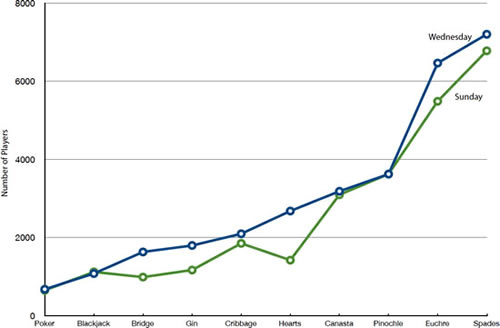2.9: Gráficas de Líneas
- Page ID
- 152185
Objetivos de aprendizaje
- Crear e interpretar gráficas de líneas
- Juzgar si un gráfico de líneas sería apropiado para un conjunto de datos dado
Un gráfico de líneas es un gráfico de barras con las partes superiores de las barras representadas por puntos unidos por líneas (el resto de la barra se suprime). Por ejemplo, la Figura\(\PageIndex{1}\) se presentó en la sección de gráficos de barras y muestra los cambios en el Índice de Precios al Consumidor (IPC) a lo largo del tiempo.


Un gráfico de líneas de estos mismos datos se muestra en la Figura\(\PageIndex{2}\). Si bien las cifras son similares, la gráfica lineal enfatiza el cambio de periodo a periodo.
Los gráficos de líneas son apropiados solo cuando los\(Y\) ejes\(X\) - y -muestran variables ordenadas (en lugar de cualitativas). Aunque los gráficos de barras también se pueden usar en esta situación, los gráficos de líneas generalmente son mejores para comparar los cambios a lo largo del tiempo. La figura\(\PageIndex{3}\), por ejemplo, muestra incrementos y disminuciones porcentuales en cinco componentes del Índice de Precios al Consumidor (IPC). La cifra hace que sea fácil ver que los costos médicos tuvieron una progresión más estadiza que los demás componentes. Aunque se podría crear un gráfico de barras análogo, su interpretación no sería tan fácil.

Destacemos que es engañoso usar un gráfico de líneas cuando el\(X\) eje -contiene meramente variables cualitativas. La figura muestra de\(\PageIndex{4}\) manera inapropiada una gráfica lineal de los datos del juego de cartas de Yahoo, discutidos en la sección sobre variables cualitativas. El defecto en la Figura\(\PageIndex{4}\) es que da la falsa impresión de que los juegos están naturalmente ordenados de manera numérica.



